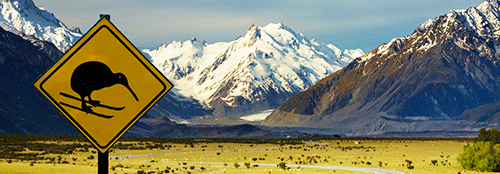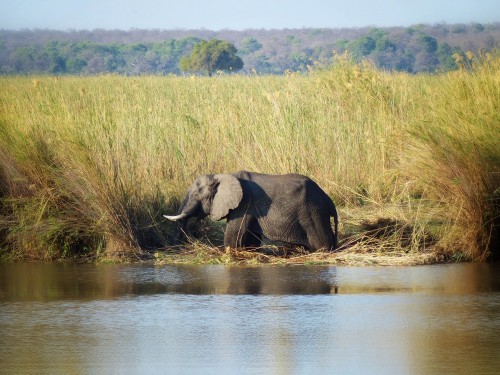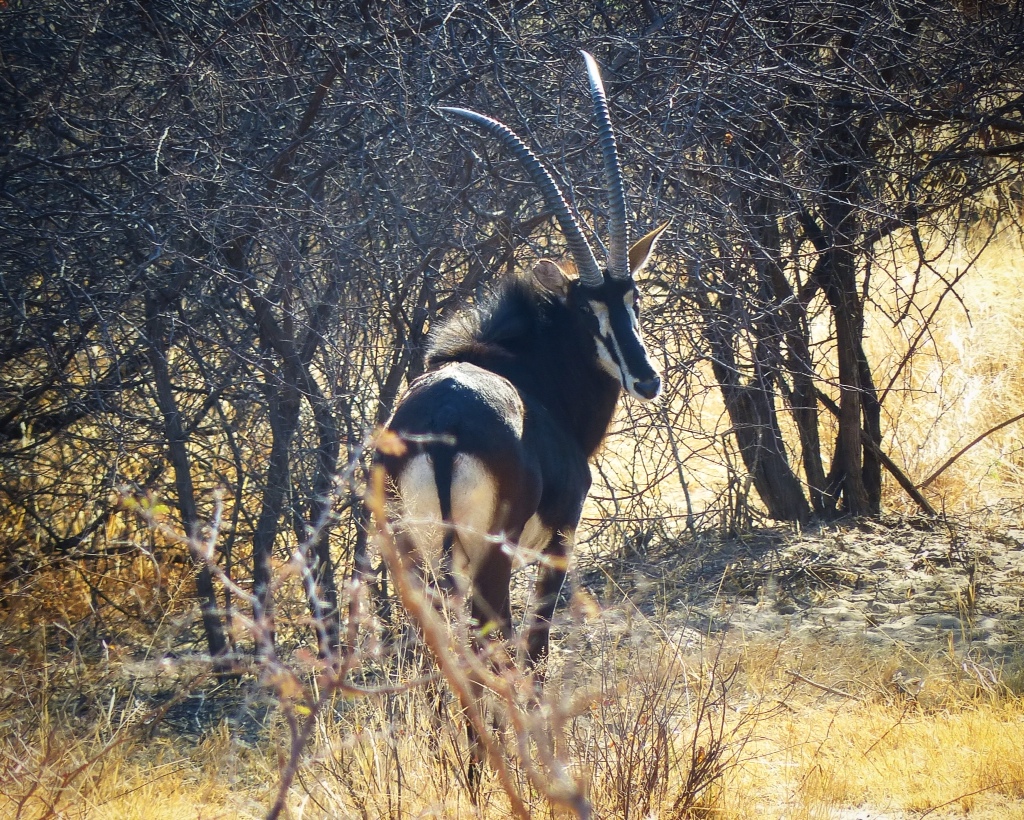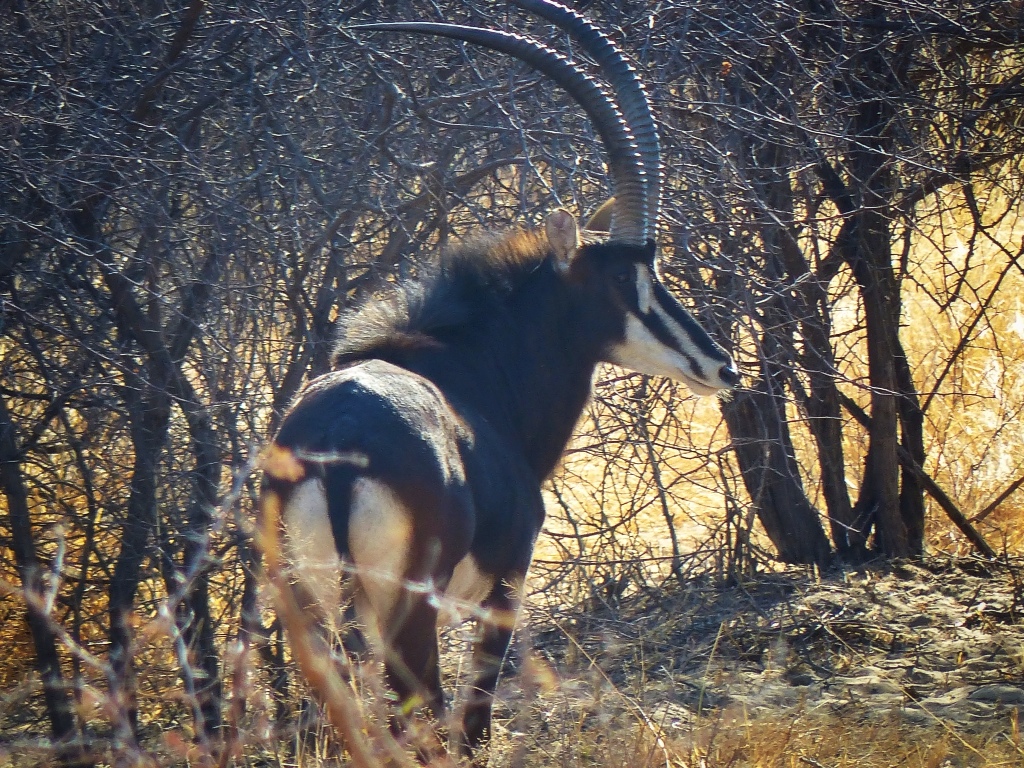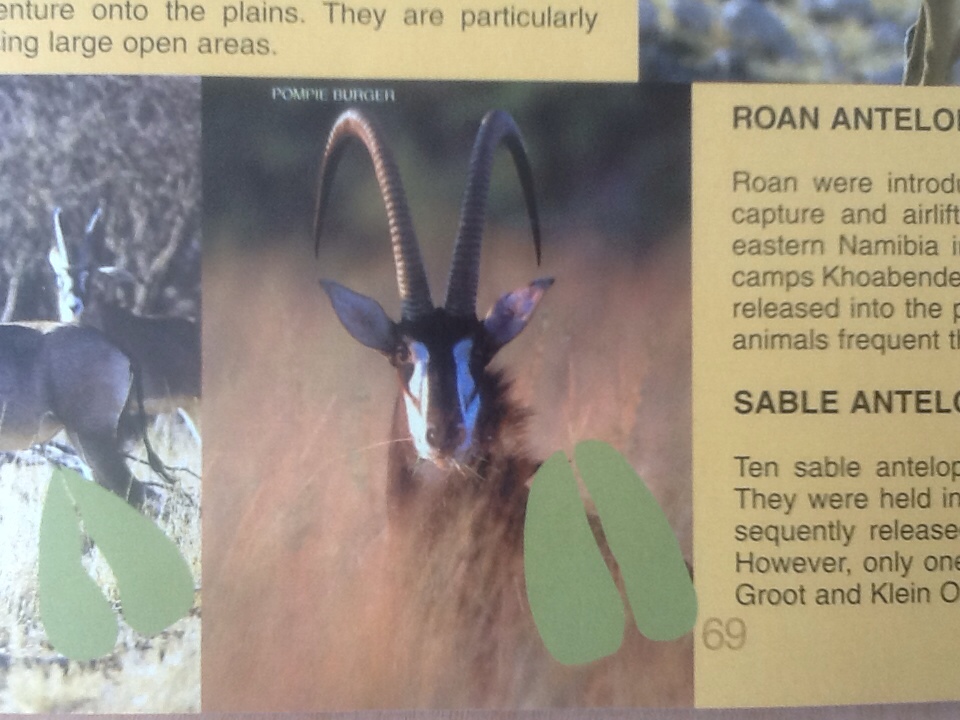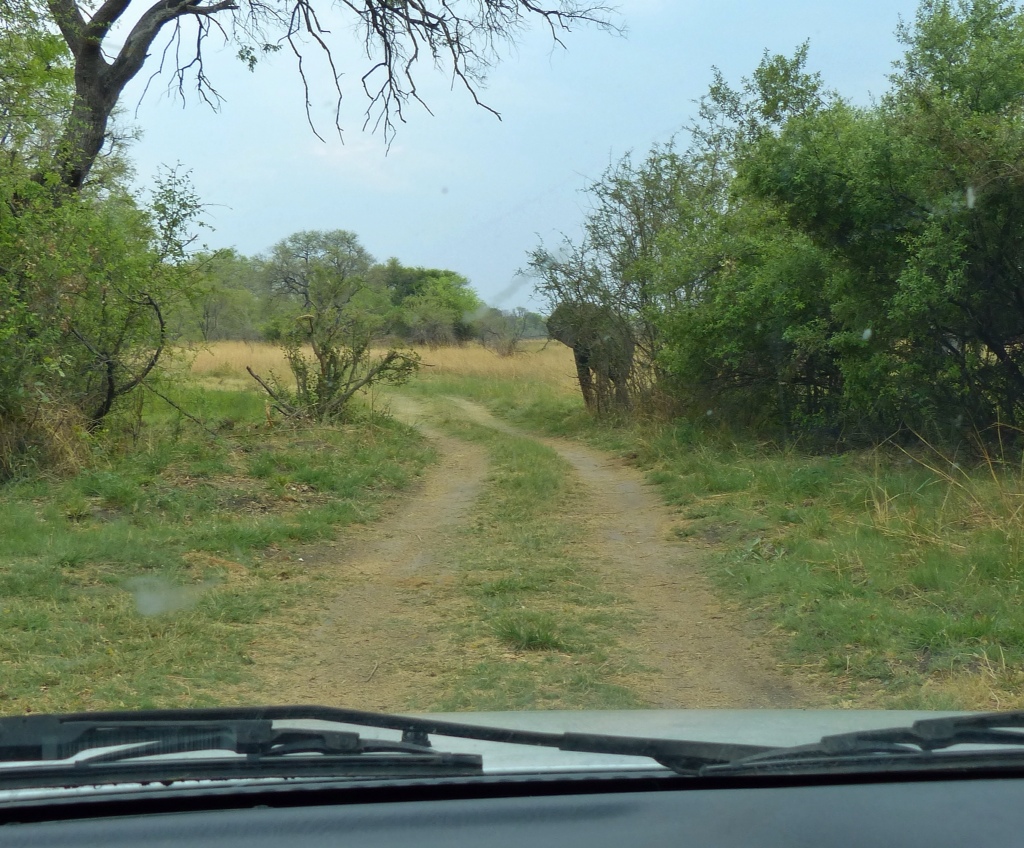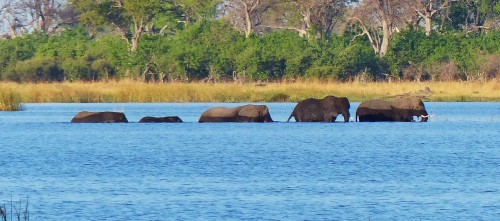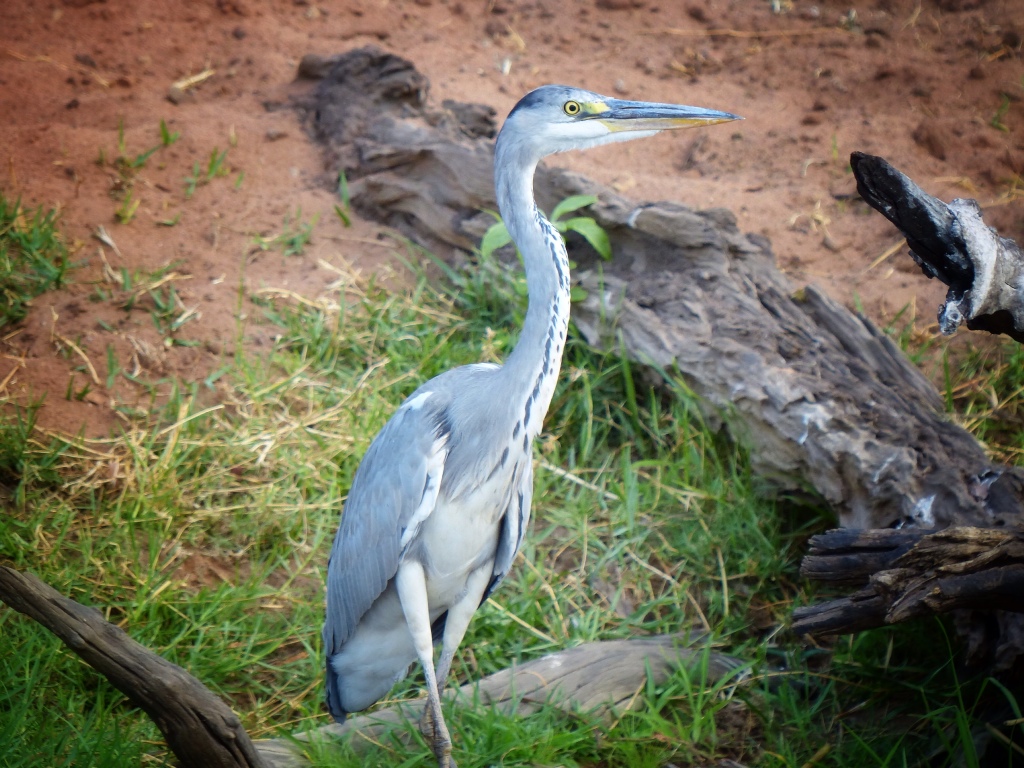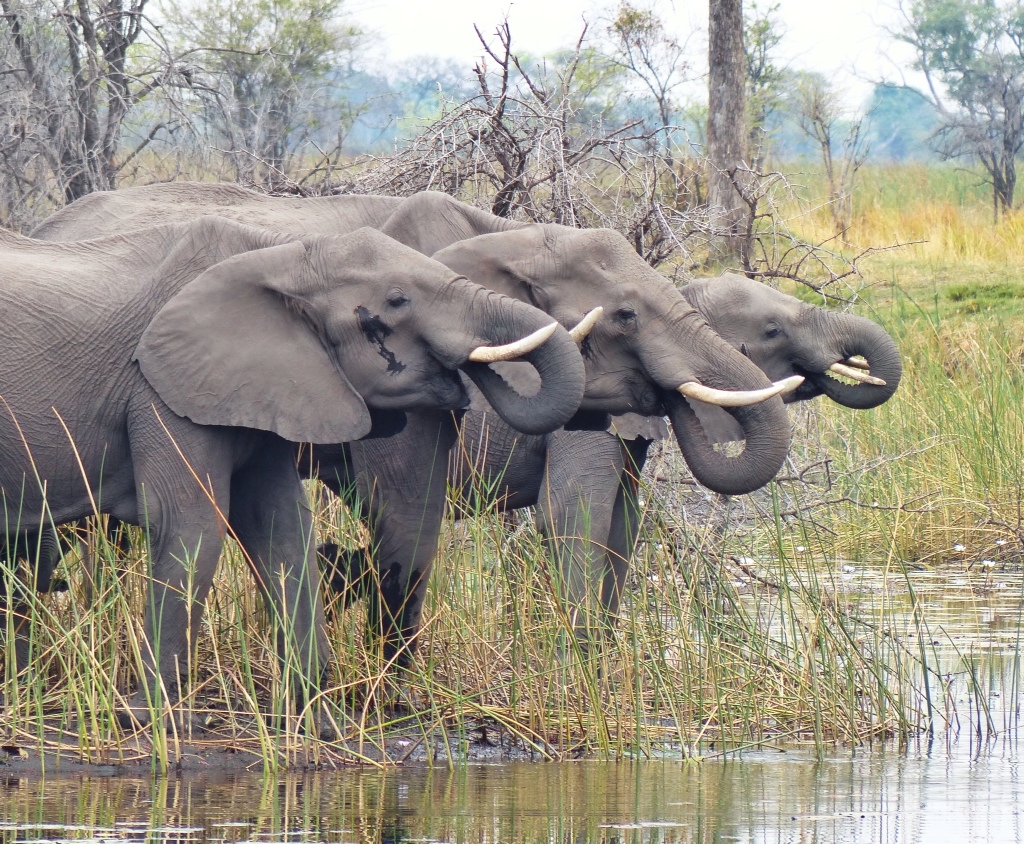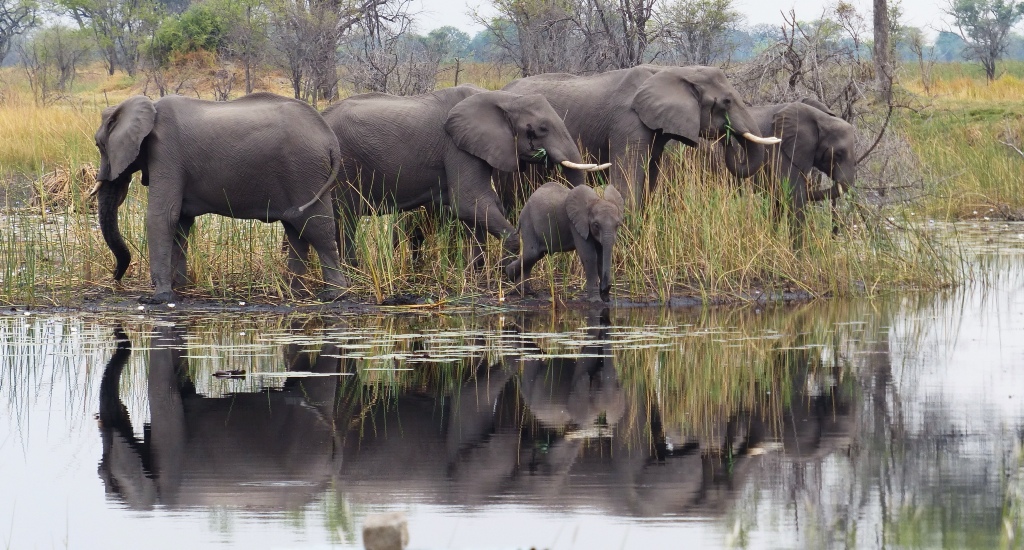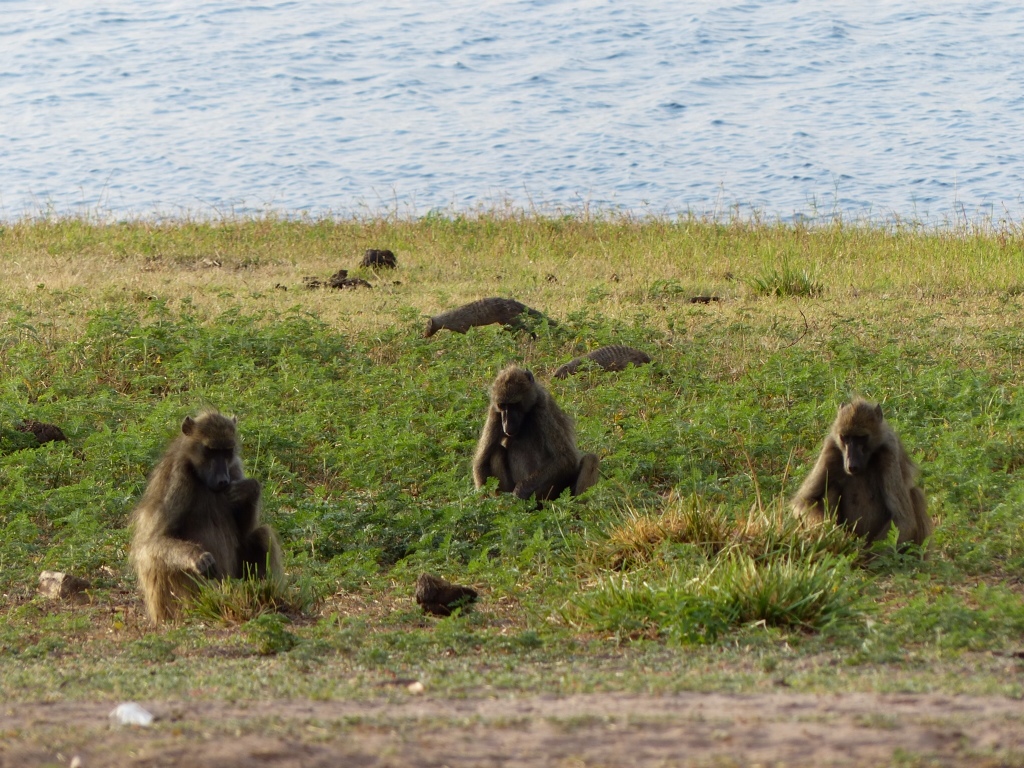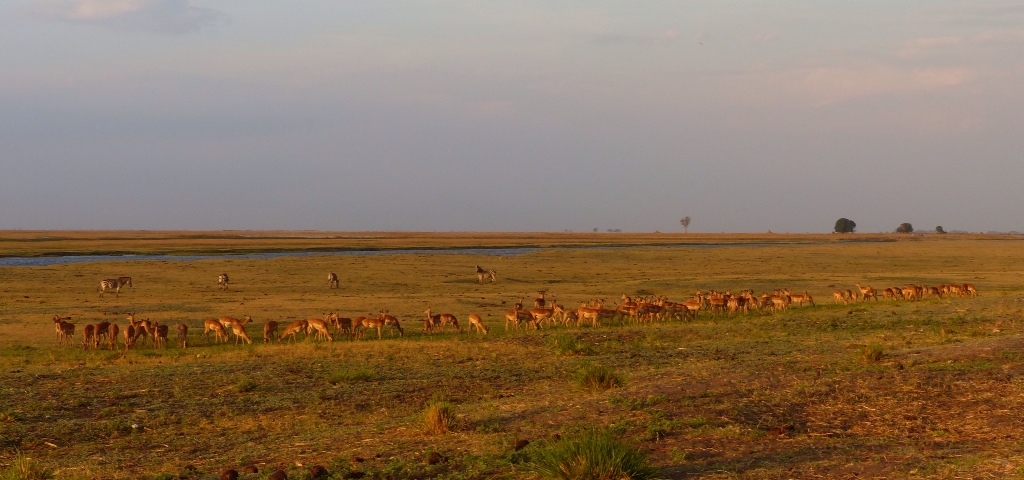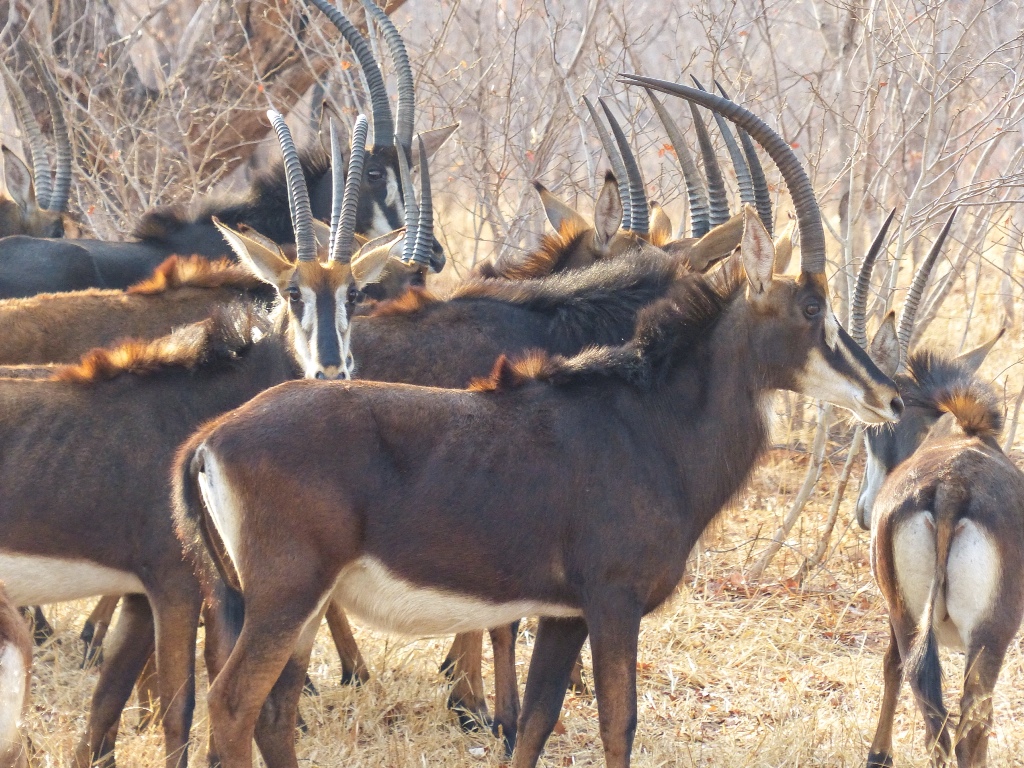It’s a Pompie Burger!
October 17-24 (Caprivi Strip, Namibia and Chobe National Park, Botswana) —
From Etosha, we headed to Rundu, Namibia, which is on the border with Angola and is the gateway to the Caprivi Strip of Namibia. Rundu was packed — like there was no-room-at-the-inn kind of packed.
For those who haven’t studied African geography recently, the Caprivi Strip is the thin panhandle portion of Namibia that extends from the northeast corner out to the east to give Namibia access to the Zambezi River. Because of the Caprivi, Namibia shares borders with Zambia and Zimbabwe in addition to borders with Angola to the north, Botswana to the east and South Africa to the south.
The political history of the Caprivi and how it came to be part of Namibia is very interesting (a wiki digression would be appropriate here if you are really procrastinating at work), but the end effect is that Namibia includes a piece of some of the lush Okavango Delta, near the Linyanti and Savuti areas. On the other side of the border, Botswana has developed one of the most posh areas on the continent for safari. But the Namibian side is pretty much empty. Except for the animals. Which are amazing.
But back to Rundu, where we arrived much later than planned. Since we picked up Jimmy, we had a problem with the tent not closing properly and, given that the wet season was threatening to start soon, we knew we had to get it fixed. Upon leaving Etosha, we swung through a good sized town called Tsumeb to see Frank at Executive Auto Repair who slotted us in, fixed the tent quickly, and even billed our car rental company rather than us. We highly recommend them to anyone in need of a mechanic near Etosha.
Even though Frank fixed the tent very quickly, we did not cover as much ground as we had planned and, for the first and only time of the trip, we violated our rule about not driving at night in Africa. After the 127th time in 30 minutes that I had to slow or stop for goats, cows, or donkeys that were meandering across the “highway,” it was confirmed that we really, really, really shouldn’t drive at night.
We had called lodges on the way to Rundu and were amazed to find that the whole town seemed to be booked. To put this in perspective, it would be like pulling into Corpus Christi, Texas or Redding, California to find that the town had zero rooms available on a random Tuesday. So after numerous calls, we headed to the only place with a room available, which according to Tracks4Africa (a terrific GPS program) was 500 meters from the Angolan border.
We got to Ngundu Safari Lodge at about 8 pm. The restaurant was packed, with loud music playing, and party people everywhere. We were shown the available room, which was a simple wood hut with two twin beds and no a/c (but a fan). Despite the fact it was still 100 degrees outside, we took the room and headed to the restaurant.
As we walked in, we saw another table had ordered a huge platter of prawns and chips (aka, fries), and it looked delicious. We ordered a kilo of prawns, along with a bottle of white wine. And, happy to be off the road and have a place to sleep, and a little overwhelmed that this town in the middle of nowhere was teeming with a party, we went through at least one more bottle of wine. With full stomachs and a strong buzz, we stumbled back to our room.
By daylight in the morning, our wood shack was actually pretty cute, and had nice views across the Okavango River to Angola.
From Rundu, we headed along the Okavango River down to the seldom-visited Mahango National Park. We stayed at Mahangu Riverlodge, and our safari tent even had a/c. This was strange, but we had no complaints! We went for a game drive and saw elephants, hippos, and crocs along the river.
It was a full moon that night and we heard elle’s trumpeting along the river as we ate dinner at the lodge.
On our way out the next morning, we stopped along the road when we saw a gorgeous antelope that we had never seen before.
David was driving so I quickly pulled out our small field guide of Namibian animals, which had seen little use. I found a picture that matched and declared excitedly, “It’s a Pompie Burger!”
David cracked up laughing: “What in the hell did you just say?”
I responded more hesitantly, “It’s a Pompie Burger?”
David couldn’t stop laughing and had to pull over to collect himself. We then realized that I had read the caption of the photo as if it was the name of the animal. In my (weak) defense, there was not the usual copyright symbol next to the photographer’s name.
We both laughed until we cried, agreeing that the two bottles of wine back in Rundu must have obliterated a few of my brain cells. Sigh.
We headed on to Mamili National Park on the southern edge of the Caprivi where it borders the Linyanti, Savuti and Chobe areas of Botswana. We weren’t quite sure what we were going to find there. Indeed, we had been warned by a number of travel agents, guides, etc. that Mamili was “under water most of the time,” “inaccessible,” and even “empty of animals.” But David had read an article in Getaway magazine praising Mamili, and I was game to explore. We called the only lodge in the area and, although they were fully booked, they told us there was a community campsite nearby. They also said that we could join one of their game drives, so we went.
We then discovered that the road there was under construction. This does not mean the same thing in Africa as it does in the U.S. In Africa, this usually means that the construction crew has built an parallel dirt (i.e., shitty) road next to the main road for use while the main road is under construction. These side roads are crazy full of potholes, sand, large trucks, and animals. Meaning that it took us over 4 hours to travel 60 km.
When we finally got to Nkasa Lupala Lodge (www.nkasalupalalodge.com) it was close to 2 pm. We were greeted by the lodge manager, Erica, with cool, wet towels to clean our hands and face as well as a welcoming drink of mango juice. We tried to turn her down, explaining that we were going to stay at the local campsite and weren’t lodge guests, but she insisted. She then convinced us to join some lodge guests for “the combo” — an afternoon game drive and boat ride leaving in 10 minutes. Erica is good at her job. And the Italian owners of the lodge, Simon and Alessandro, made sure that our preferred sundowner cocktails were loaded for the boat.
We went out with a guide, Moses,* not expecting to see much given the warnings and hesitations expressed to us by others in Namibia. Delightfully, we were blown away.
* Yes, it seems we have a guide named Moses in every country we visit.
Mamili National Park has no fences, no fancy gates, and essentially no tourists. This is the “road” into the park.
Nkasa Lupala Lodge can only accommodate 20 guests and it’s the only lodge on the Namibian side of the Chobe, Kwando and Linyanti rivers. As the crow flies, Nkasa Lupala is only 15 km from one of the most expensive lodges in Botswana, King’s Pool, which costs over $4500 a night. That is not a typo. The animals, of course, don’t know the difference and the result is that the wildlife viewing that one pays dearly for in Botswana can be had on the Namibian side on the cheap. We did not see a single other vehicle during our game drive nor on the water.
We shared our afternoon with a lovely couple from Germany who were keen birders and helped us appreciate the bird life. We saw a beautiful Martial Eagle.
David then excitedly pulled up a picture on our ipad of the prettiest bird we had seen on our trip (back in Uganda).
David: Do you know what type of bird this is?
“It’s a robin.”
[Bummed] A robin? Does robin mean something different in German by any chance?
“No. Just a robin like you have all over North America.”
Is it some type of special African robin?
“It’s a common robin.”
Oh.
Our brief flirtation with birding quickly extinguished, we sat back and enjoyed numerous elephant crossings and an amazing sunset with great company.
Our boat trip was briefly slowed by a pod of hippos that refused to move. Our guide eventually gunned the boat, causing the hippos to scatter. What happened next is something that we have never seen before, and the guide said he had only seen it once. One of the hippos charged the boat but did so by surfing the wake. Imagine a dolphin surfing a wave, and replace that image with a 2000 kg hippo. It was a sight that we will never forget (we were too surprised to snap a photo).
On returning to camp, we were about to head back to our campsite when one of the lodge owners invited us to eat dinner at the lodge. We enjoyed a fabulous three-course dinner and then one of the staff led us back to the community campsite, Rupara, which we would never have found in the dark.

We woke to find a herd of elephants on the river just behind our campsite.
We headed for Botswana and made our first border crossing in Jimmy. Paperwork on both sides of the Namibia-Botswana border took less than fifteen minutes. The only difficult question we encountered was from the Botswana Immigration officer who, upon seeing my birthplace listed as Texas, wanted to know “the name of that jungle restaurant in the Galleria [in Houston]” because he had eaten there earlier in the week when he was at IAH for training with US Customs and he had a picture of the decor on his iPhone! [Answer: “The Rain Forest Cafe”].
Arriving in Kasane, Botswana, we checked into a cottage we rented on the Chobe River, and I enjoyed having a full kitchen to make a meal. After a proper home-cooked meal, we took a wonderful sunset cruise on the Chobe River and saw heaps of elles, buffalo, and hippos, as well as another magical sunset.
After a couple of days of jumping through hoops with the agencies in charge of running the government campsites, we obtained a permit to camp at Ihaha, which is the only campsite inside Chobe National Park itself. We got questioning looks from the rangers when they saw Jimmy, and they were right to be worried given the depth of the sand.
Although there were several hairy moments, David got Jimmy through the deep sand. It was pretty sketchy given that Jimmy’s wheelbase was narrower than every track so we were always off camber. On the way, we found a leopard with its kill in a tree.
And a baby baboon.
And giraffes with hitchhikers.
We arrived at Ihaha and were assigned Campsite 9. After being warned by the rangers not to walk to the bathrooms due to risk of leopard attack (there was a non-fatal attack there a few years ago) we drove to our spot. Unfortunately, a large troop of baboons had overrun the site and made clear they were in charge.
They were extremely aggressive and tactical — some would try to distract us from the front while others tried to sneak up behind us. Another group of campers advised that the baboons had destroyed the tent of the group in Campsite 9 the previous night. We decided that there was no way that we could safely fix a meal with them around, so we hid in Jimmy while they hissed at us. While we debated whether we could sleep inside of Jimmy for a night, the craziest dust storm that we have seen since Lake Powell reduced the visibility to zero. Unfortunately, when it cleared, our nemeses were still there.
Debating what to do, we pulled out the field guide which describes the behavior of African wildlife. We were happy to read that baboons return to their roost/ tree at sunset and remain there for the night to protect themselves from leopard attacks (the two are mortal enemies). Sure enough, as the sun reached the horizon, the baboons marched straight to their roost. Which, unfortunately, was the tree in our assigned campsite. We decided that there was zero chance that we were going to camp there, so moved to the only other empty campsite, hoping that no one would show to claim it. We finally made camp and ate cereal for dinner with our backs to Jimmy. Finally able to enjoy the view, we settled into our tent and enjoyed a mostly peaceful night of sleep.
I say mostly because our friends in the tree next door went nuts at approximately 3 a.m. and woke us up. We could not see anything outside, but we did hear some animal(s) drinking water down by the river. We laid awake for a while and saw a porcupine and numerous mongoose and then fell back to sleep. Two hours later, as first light hit our tent, we wondered whether our friends would be up soon as the field guide predicted. Sure enough, minutes later, we saw them descend from their roost and march in a line as if going off to war. Thankfully, they headed away from us and we quickly broke down camp, chugged down red bulls and snickers for breakfast, and prepared to leave. As we were about to depart, we found two sets of leopard tracks around our campsite and near the baboon tree and realized what had caused them to alert in the middle of the night.
After some more sand bogging, we hit tarmac and saw more sable antelope (aka, Pompie Burgers!) on the way out of Chobe.
Next stop: Maun, Botswana to fly in a very small plane into the Delta.
